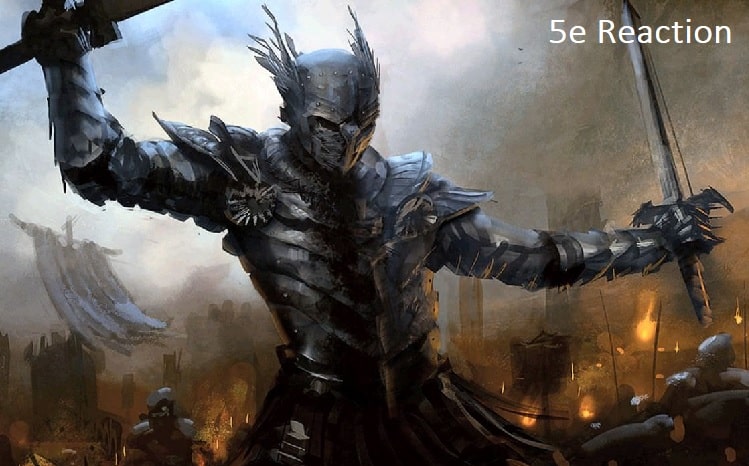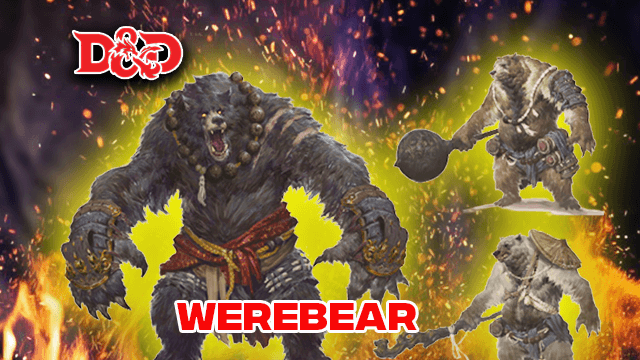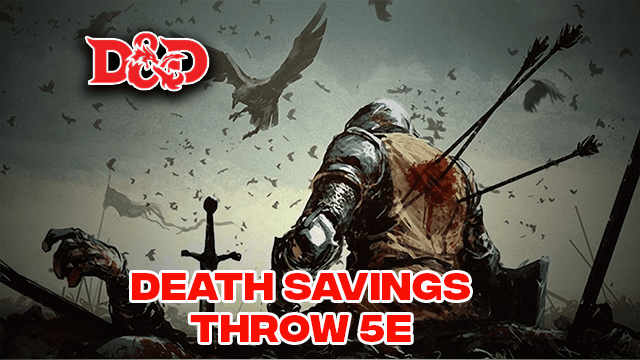Reactions 5e: What is a Reaction D&D (Guide) 2023
You can take a specific act termed a response with these different talents, abilities, and circumstances. A reaction 5e is indeed an immediate reply to a particular form of stimulus, which can happen on your move or another’s. The most typical type of response is an opportunity attack.
You can take a Particular action called a Reaction 5e with these Extraordinary Abilities, Spells, and situations. A Response is an instantaneous reaction to some form of event, which can happen on Your Move or somebody else’s.
You won’t be able to take another reaction 5e only until you start with your next round. If Reaction 5e causes another monster’s turn to be interrupted, that monster can resume its turn immediately after the response.
Table of Contents
Attacks of Opportunity
An Opportunity Attack 5e is a prominent example of such a response which any Character can use. An Opportunity Attack is a solitary melee strike that you can make unless an opponent travels from your reach while you’re holding a melee weapon. It usually happens when an assailant drifts away from you or tries to get by you.
It usually happens when an assailant drifts away from you or tries to get by you.
The majority of melee weapons get a range of 5 to 10 feet.
Similarly, if a Computer leaves their area, foes are permitted to make an Opportunity Strike. Since most PCs and creatures only have one response, they can only execute an opportunity attack for each round.
Using the Disengage act or even other special skills can also help you avoid accepting an opportunity attack.

More Abilities That Use Reaction 5e
Many dnd 5e Reaction abilities, except Opportunity Attacks, are awarded by character or subclass characteristics, spells, or achievements.
There are just a few 5e Reactions that all players can use. These are some of them:
- Using a response to activate the Ready act is an activity that a PC has planned ahead of time to perform when a specified triggering event happens. Such as shooting an arrow as an adversary approaches.
- If you were riding a horse and knocked flat, you can exit and bounce on your feet using a response.
- You can also use an Intellect (Arcana) DC 15 + spell rank test to recognize a spell. At the same time, it was being delivered (optional rule from Xanathar’s Guide to Everything).
What is the Action Economy, exactly?
The term “action efficiency” refers to a team’s ability to fulfill numerous tasks throughout each round.
Skilled players will frequently strive to combine their 5e reaction and bonus actions to create their avatars extra successful and lethal in a fight.
It’s not always straightforward, but various class/subclass traits, feats, and abilities can help players develop their movement economy.
Polearm Master, for instance, is a familiar feat that allows a character to (a) perform a bonus action strike on their round and (b) make an Opportunity Attack whenever an adversary advances into reach.
As you’ll see, this feat is excellent for action economy since it also provides a bonus action. As well as a response choice, allowing players to create up to three times as many attacks as they would ordinarily.
However, there is a range of additional methods to employ emotions, especially as players level up.
Shield, soak materials, fiery censure, fluffy fall, and counterspell are all spells that employ a response.
A specific triggering event must occur in each of these scenarios. For instance, to throw Shield, an enemy must attack you, although, to throw Hellish Rebuke, an adversary must injure you.
Since their Cunning Action grants them multiple extra actions, and Uncanny Dodge allows them to spend a 5e reaction to suffer ½. Through one assault every turn, providing the assault is seen to the rascal, tricksters are experts of Action Economy.
You have the option of moving and perform actions during your turn. As your point out, the preparation step is just like any other action. It indicates that you can move or take a prepared act on your round.
The Prepared Response
You can respond to a particular “discernable circumstance” with the ready action.
Use the Prepared act on your shift so that you’re using your 5e Reactions late each round to react.
Whenever the provided impetus, you have the option of reacting immediately or waiting until the trigger has passed.
Terms in D&D: Spins and Rolls
I’ve observed many players who don’t precisely grasp how things differ. So I figured it’d be a good idea to remind folks what they signify since they’re in so many skills.
However, the word “round” is in three different ways, so it’s not as simple as it appears.
The essential representation of the data:
Rounds are to break up the fight. Each opponent takes one shot throughout around. The game ends after each participant has done their time, as well as the new round starts.
Here are a few instances where the concept of turn is critical:
It implies that if a Thief repeatedly hits in a single corner, the surprise attack harm can only assign to one of those attacks. Suppose the Warrior utilizes an item that enables the Runaway to execute an assault on the player’s turn. In that case, the Rebel gets flanking maneuver on the harm, regardless if they’re in their spin. What is the explanation for this? The Warrior and the Rebel have distinct turns while participating in each round.
The Religious leader uses a bonus action to cast armor of trust on their round. About the only magic, they may perform that turn is a cantrip with such a striking duration of one action, according to cast rules. Whenever the Ogre assaults the player on the Ogre’s move, though, the character may spell shielding as both a dnd 5e reaction — the turn is no still the very same.
Give heed to the wording of the capacity: rounds or rotation.
Then for the part that many folks find perplexing.
Its most essential purpose is the combat round that everyone gets a turn to act (let’s call this a “battle round”). It usually indicates “until it becomes your round again” can be used in a magical time.
As a result, the directing missile has a one-round duration that seems to last until your following action conclusion. Cold contact has a one-round range and seems to last until the beginning with your following action.
The Shield is the oddest example. It lasts for “one round,” but it finishes when your next turn begins. It won’t endure the entire round, though, because you usually cast it during your opponent’s turn. Consider a Barbarian, Thief, Warrior, Gnome, Orc, Wizard turn sequence. The Wizard uses it to protect herself from the Orcs’ attack. The enchantment then comes to an end. If Orge performed the spell against the Ogre, however, it really would keep working and through episodes of the trolls and orcs till the Magician’s time arrives around again!
Two further points to consider
We mentioned “At the beginning of every round” or “After every round” a lot in prior editions. It’s a convention you shouldn’t utilize in 5th Edition experiences, whether you’re creating them. It’s more straightforward to say “On effort count 20” or “On initiative count 0.” (See the Monster Manual’s Lair Actions.)
The developers get tripped up by the concept of “round” in the term of “Prepare,” which states that “you can really only make one response each round,” referring to the individual round and spell effects. You should use a response twice in a “combat round,” as they refer to it for the remainder of this chapter.
You reclaim your answer at the beginning of your action, so if your use a response, then have you twist. They could use your response there within the “battle round.” During your “private round,” I didn’t take a reply twice.
Conclusion
A reaction in D&D 5e is a unique course of retaliation that a player (PC) can perform in response to a particular trigger.
UNLIKE OTHER ACTIONS, a PC can use a response on another team’s or a demon’s turn. Nevertheless, as few skills employ reaction 5e, typical gamers probably wouldn’t use them often, particularly at lower levels.
Faqs
A Reaction is an instantaneous reply to form a stimulus that can happen on Your Move or on another’s. The most frequent type of issue is an opportunity attack. You won’t be ready to obtain a Reaction till the beginning of your first turn.
Your turn is usually made up of Action and Extra Activities. However, a response can be added to a particular round. Inside a session, players could only take Actions or Bonus Moves in one round. Inside the game, you might use your response on your own move or on anyones.
In the gaming universe, per round corresponds with about 6 seconds. Every player in a fight, things took a turn in around. When everybody takes Interest just at the start of a combat battle, the sequence of rounds is set.
You can take a particular act termed a response with these different talents, abilities, and circumstances. A reply is an instantaneous reaction to a specific form of stimulus that can happen on your move or on anyones.







